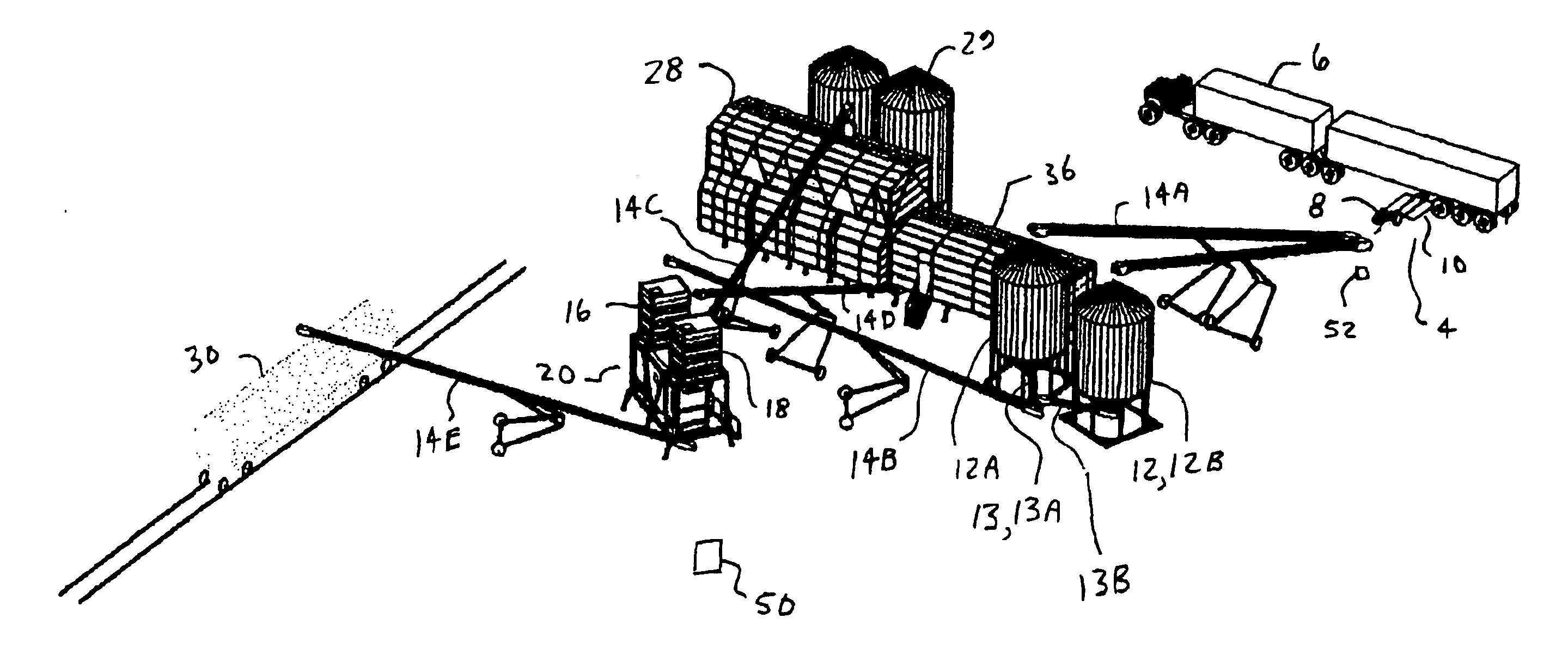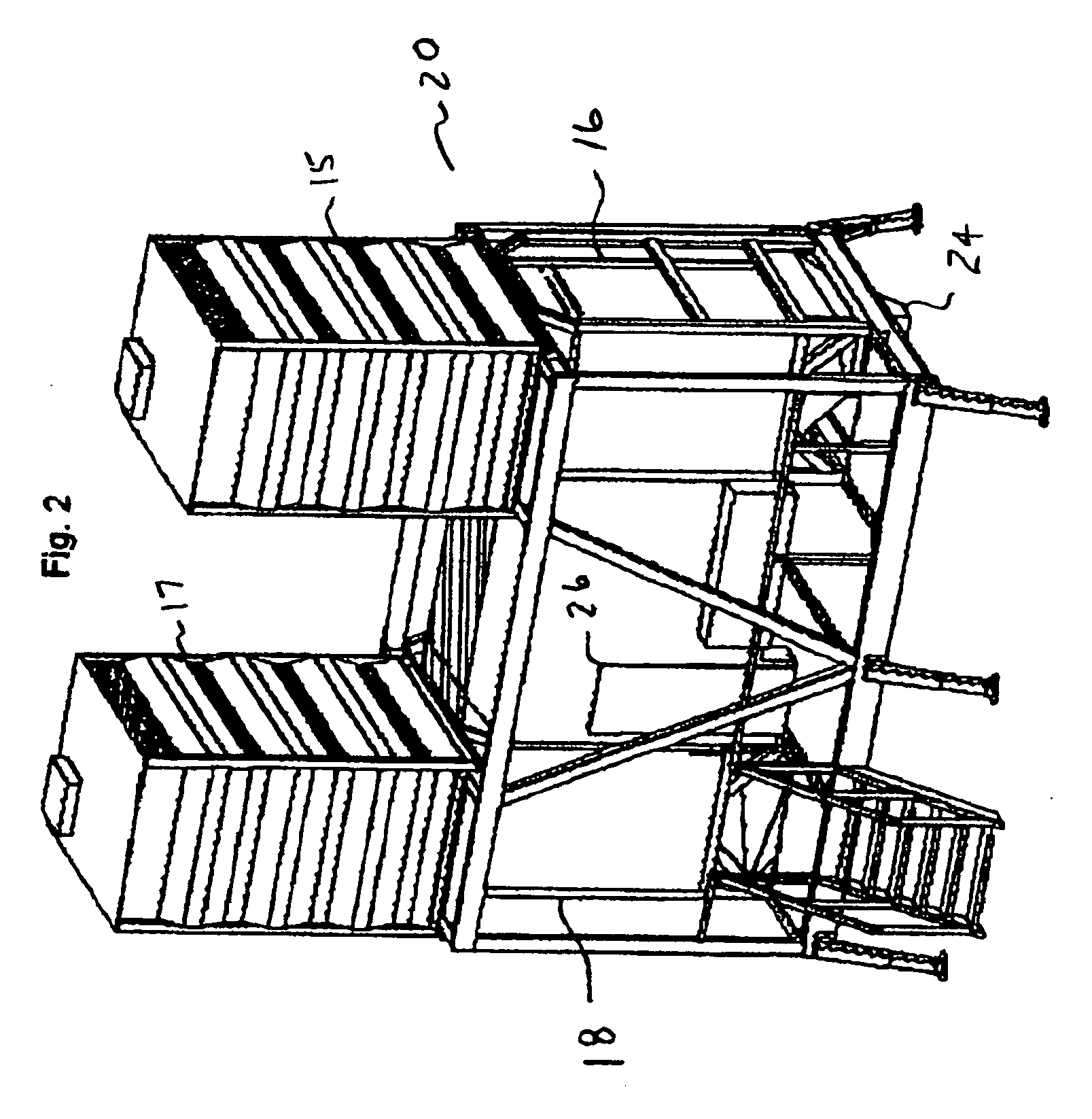Method and apparatus for moving agricultural commodities
a technology for agricultural commodities and equipment, applied in the direction of screening, logistics, sieving, etc., can solve the problems of increasing the distance required to transport a commodity to these commercial terminals, increasing the total transportation cost from farm to market, and affecting the quality of agricultural commodities
- Summary
- Abstract
- Description
- Claims
- Application Information
AI Technical Summary
Benefits of technology
Problems solved by technology
Method used
Image
Examples
Embodiment Construction
[0049]FIG. 1 schematically illustrates a portable processing plant of the invention. The plant comprises a receiving station 4 operative to receive a commodity from trucks 6. Conveniently a portable receiving conveyor 8 with a drive-over intake 10, such as are well known in the art, will provide the receiving station 4. Where the commodities are subject to cracking and breakage, such as is the case with peas, beans, and the like, belt conveyors will be preferred over auger conveyors in order to reduce handling losses.
[0050] The commodity is transferred from the receiving station 4 to storage bins 12. Typically two storage bins 12 will be provided, each capable of containing at least one truck load of the commodity being processed. In the illustrated embodiment two portable belt conveyors 14A are oriented to receive commodity from the receiving conveyor 8, and transfer the commodity to one of the storage bins 12. Alternatively a single belt conveyor 14A could receive commodity from ...
PUM
 Login to View More
Login to View More Abstract
Description
Claims
Application Information
 Login to View More
Login to View More - R&D
- Intellectual Property
- Life Sciences
- Materials
- Tech Scout
- Unparalleled Data Quality
- Higher Quality Content
- 60% Fewer Hallucinations
Browse by: Latest US Patents, China's latest patents, Technical Efficacy Thesaurus, Application Domain, Technology Topic, Popular Technical Reports.
© 2025 PatSnap. All rights reserved.Legal|Privacy policy|Modern Slavery Act Transparency Statement|Sitemap|About US| Contact US: help@patsnap.com



